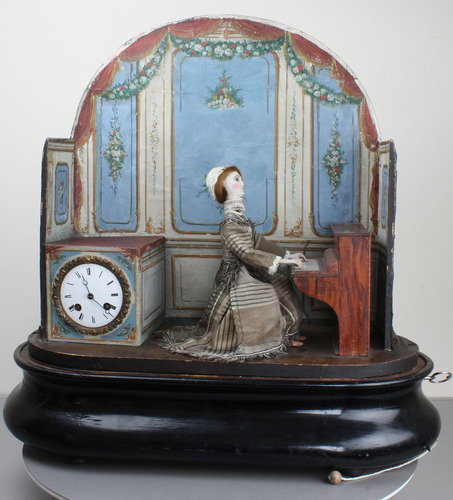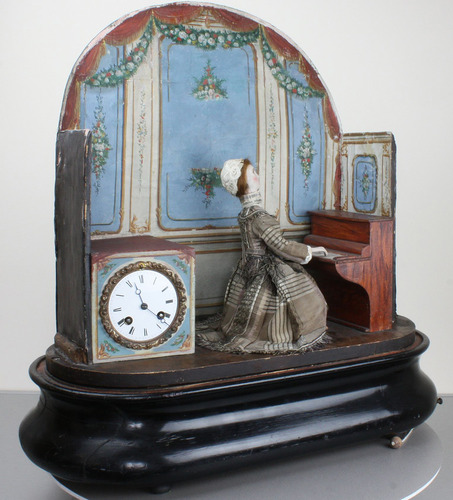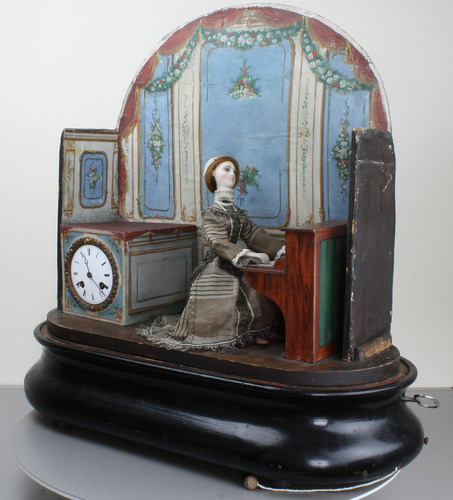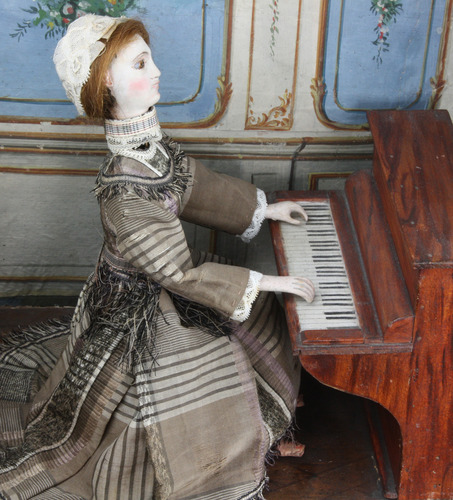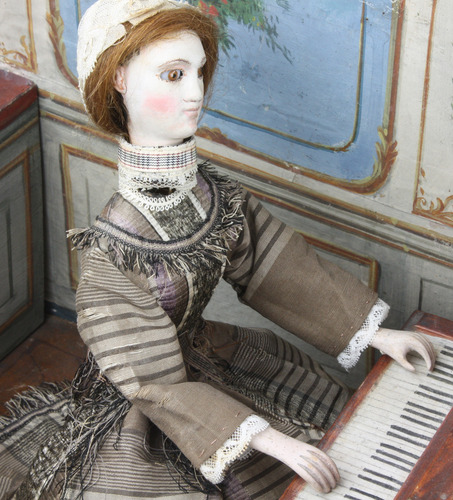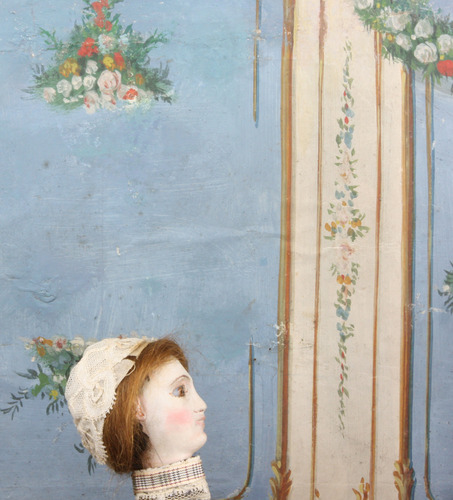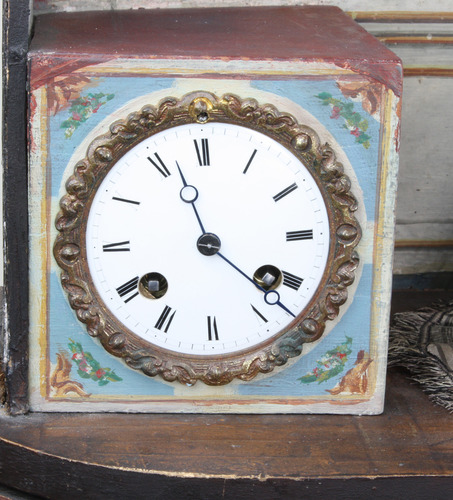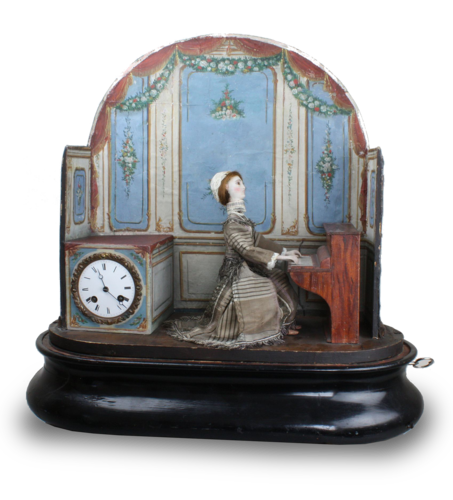
Antique lady pianist musical automaton with timepiece, by Jean Phalibois
A stunning and very rare antique lady pianist musical automaton with timepiece, by Jean Phalibois
French
circa 1880
Possible one-off commission made example by this famous automaton genius,
Our little sonata in perfect miniature...
When wound, the musical movement start/stop and pull-wind, automaton start/stop and key-wind to the right-hand side. The automaton action with single-spring motor, six linier cams from circular universal spindle, the six tracer arms directing the seven movements, for head lifting up and lowering down, head turn to right side towards audience, left hand up and down, right hand up and down and both hands moving opposing side-to-side, accompanied by the separate cylinder musical movement, playing Oh Dear! What Can The Matter Be? and T'was Within A Mile Of Edinburgh in 1-1-2-2 sequence, wound on pull-string tabataire train.
The seated lady at the piano. Head of very finely carved and shaped painted gesso on wood, hazel glass eyes, minute detail including eyebrows, rosy cheeks and lips, natural hair styled to the French sweep, under lace panelled cap, fully attired in late 18th century taste with soft mauve, grey and cream weaved dress, matching checked ribbon banded detail, petit tassel bust panel and larger panel around waist and base hem, miniature lace cuffs and collar, very good moulded and painted hands with posed fingers at the keyboard, stockings and pink silk shoes just homing into view.
Seated within room interior three-wall diorama, with the upright piano on right side with grained finish, five-octave keyboard and green soundboard cover, to the left side a wonderful circular four-pillar timepiece, with 2-train movement, white enamel dial with chapter ring and Roman numerals in black, blued hands, regulator adjustment above the XII, relief cast ormolu surround, housed within square room panelling with the matching room décor of light blue panels with flower sprays and gilt framing, divided by the cream pillars bearing the same, high proportioned dado reliefs, floor with painted cross parquet construction, on the shaped oval ebonised base.
size - 22in. wide, 24in. high, 10in. deep - (56 x 61 x 25.5cm)
Point of Interest -
The energetic melodic music is a real treat, including the classic Oh Dear! What Can The Matter Be? This is a traditional nursery rhyme which can be traced back to late 1780's England. There are three different sets of lyrics known, according to where the song was performed.
The six cam tracers control seven movements. The shared tracer acts as the counter-balance for the head return to horizontal. This eliminated the need to have a return spring mounted within the head which is just as well, as there is no room, after the pivots for both head vertical and horizontal planes were installed. The head alone is a very complex affair containing an advanced design.
One may be reminded of the incredible feats achieved by the genius J. Droz, and his dulcimer-playing Marie Antoinette. Although this lady does not really play the piano, the movements of the mime which are exhibited have been certainly influenced by the delights of automatons which do, with the obvious and famous example mentioned being the most probable source.
This is Phalbois at his best. Fantastic attention to the feeling of playing, set off within the most appropriate of environments - your home.
Reference:
Other Golden Age automaton makers working in Paris, produced just a few pianist automatons, featuring a lady at the instrument, to smaller less detailed scales without timepiece. For illustrations of these, see p.243 for Vichy, p.290 for Roullet & Decamps and p. 343 for Lambert examples in Automata - The Golden Age, C. Bailly, 1987.
The only two known recorded models (without the timepiece feature) by Phalibois made and sold through their London agents, Silber & Fleming, are catalogue Nos. 599 and 6669, illustrated also in the above publication on page 162.
There is also the record of two diorama musical automatons by Phalibois, entitled The Seamstress and At The Barber's. Both in the Guinness Collection, with identical ebonised bases to the same scale and full scene backing formed for dome profile. This piece most likely part of the same commission set.
| STOCK No | 1470 |
| AVAILABILITY | Sold |
| PRICE | Sold |


